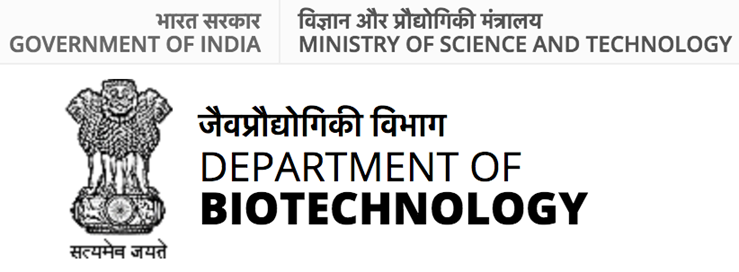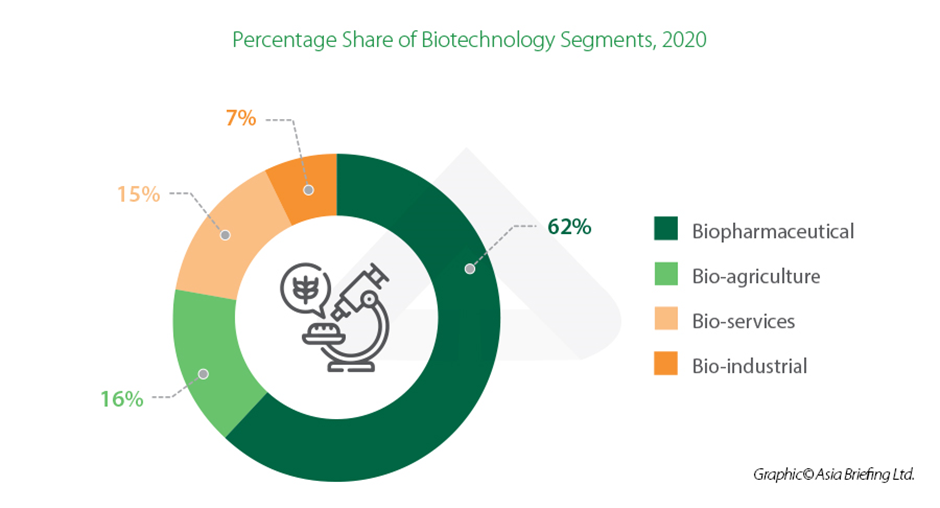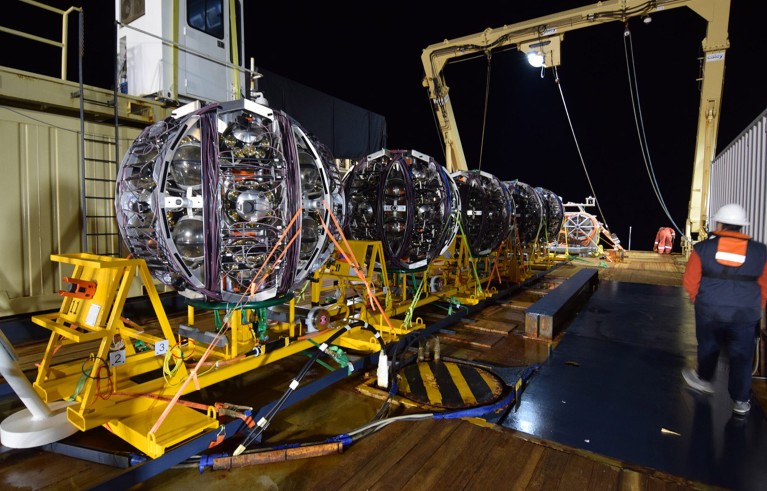- Courses
- GS Full Course 1 Year
- GS Full Course 2 Year
- GS Full Course 3 Year
- GS Full Course Till Selection
- Answer Alpha: Mains 2025 Mentorship
- MEP (Mains Enrichment Programme) Data, Facts
- Essay Target – 150+ Marks
- Online Program
- GS Recorded Course
- Polity
- Geography
- Economy
- Ancient, Medieval and Art & Culture AMAC
- Modern India, Post Independence & World History
- Environment
- Governance
- Science & Technology
- International Relations and Internal Security
- Disaster Management
- Ethics
- NCERT Current Affairs
- Indian Society and Social Issue
- NCERT- Science and Technology
- NCERT - Geography
- NCERT - Ancient History
- NCERT- World History
- NCERT Modern History
- NCERT Medieval History
- CSAT
- 5 LAYERED ARJUNA Mentorship
- Public Administration Optional
- ABOUT US
- OUR TOPPERS
- TEST SERIES
- FREE STUDY MATERIAL
- VIDEOS
- CONTACT US
Biotechnology in India
Biotechnology in India
18-03-2023

Biotechnology in India
- Biotechnology refers to the use of living organisms or their products to develop new technologies or improve existing ones. It involves the application of scientific and engineering principles to living organisms or biological systems to create products or processes that are useful in areas such as medicine, agriculture, environmental science, and industry.
- Examples of biotechnology include genetic engineering, bioinformatics, bioprocessing, and tissue culture. Biotechnology has the potential to provide solutions to many of the world's most pressing problems, including food security, energy production, and the treatment and prevention of diseases.
Types of biotechnology
- Red Biotechnologies: According to the Biotechnology Innovation Organization (BIO), this is the health branch that is accountable for the creation of more than 250 vaccines, medications like antibiotics, regenerative therapies, and artificial organs.
- Grey biotechnology: Through, as was mentioned earlier, bioremediation processes, its goal is to preserve and restore contaminated natural ecosystems.
- Gold Biotechnology: It is responsible for obtaining, storing, analyzing, and separating biological information, particularly that pertaining to DNA and amino acid sequences. It is also referred to as bioinformatics.
- White Biotechnology: The industrial branch works to make manufacturing processes more efficient and sustainable, develop biofuels, and develop other technologies.
- Green biotechnology: It is utilized by over 13 million farmers worldwide to combat pests, nourish crops, and strengthen them against microorganisms and extreme weather conditions like frosts and droughts.
- Yellow Biotechnology: This branch focuses on food production and conducts research to reduce the amount of saturated fat in cooking oils, for instance.
- Blue Biotechnology: This makes use of marine resources to acquire products for health care, aquaculture, and cosmetics. In addition, it is the most common method for extracting biofuels from particular microalgae.
History of biotechnology in India

- The remarkable march of India into the world of bio-sciences and technological advances began in 1986.
- The then Prime Minister of the country, late Rajiv Gandhi accepted the vision that unless India created a separate Department for Biotechnology. This was because many of our macro-economic issues of growth were subsumed within that science’s development.
- A National Biotechnology Board (NBTB) was constituted by the Government to identify priority areas and evolve long term perspective for Biotechnology in India. It was also responsible for fostering programme and strengthening indigenous capabilities in this newly emerging discipline.
- The first autonomous institute, the National Institute of Immunology which was set up in 1981 was brought under the wings of DBT. Soon after, it was joined by the National Facility for Animal Tissue and Cell Culture of Pune formed in 1986 which was later christened the National Centre for Cell Science.
- The late 1990s and early 2000 saw many other institutes like The National Institute for Plant Genome Research (NIPGR), the National Brain Research Centre (NBRC) followed, the Centre for DNA Fingerprinting & Diagnostics, Institute of Bioresources and Sustainable Development and the Institute of Life Sciences take shape.
About biotechnology sector in India

- India is among the Top 12 destinations for biotechnology worldwide and 3rd largest destination for biotechnology in Asia Pacific. In 2022, India’s Biotechnology industry has crossed $80.12 Bn, growing 14% from the previous year. India’s bioeconomy contributes 2.6% to India’s GDP, as of 2021.
- The Indian Bioeconomy has witnessed a manyfold increase in valuation in the past ten years, with COVID-19 giving the industry a much-needed push.
- Indian Bioeconomy grew from $70.2 Bn to $80.12 Bn in 2021. Today, India is poised as one of the leading destinations for bio innovation and biomanufacturing, and hence is identified as a sunrise sector and a key part of India’s vision of reaching a $5 Tn Economy by 2024.
- India’s Biotechnology sector is categorized into Biopharmaceuticals, Bio Agriculture, Bio IT and BioServices.
- Biopharmaceuticals: India is one of the biggest suppliers of low-cost drugs and vaccines in the world. India also leads in biosimilars, with the greatest number of biosimilars approved in the domestic market. The largest portion of the Indian bioeconomy continues to be accounted for by biopharma. Biopharma accounted for 49% share of the bioeconomy, and its total economic contribution was estimated at US$ 39.4 billion. Example: development of COVID-19 vaccines.
- Bio Agriculture: With nearly 55% of Indian terrain under agriculture and allied activities, India is one of largest producer of BT-Cotton and has the 5th Largest Area of Organic Agriculture Land Globally. Example: BT cotton, DMH 11 mustard.
- Bioindustrial: The application of biotechnology to industrial processes is transforming manufacturing and waste disposal across the country.
- Bio IT & Services: India offers a strong capability in contract manufacturing, research and clinical trials, and is home to the most US FDA approved plants globally outside of the US.
Other Applications of Biotech
- Livestock: In various aspects of the livestock industry, biotechnology is being used to accelerate the development of new breeds for improved animal health and welfare, increased reproduction, and improved nutritional quality and safety of animal-derived foods.
- Processing of food: Enhancing taste, yield, shell life, and nutritive values are all made possible by modern biotechnology. Food processing (fermentation and enzyme-involving processes) also benefit from this. Therefore, biotechnology helps eradicate hunger, malnutrition, and diseases in developing nations and the third world.
- Create Biomarkers - It is a utilization of biotechnology in the climate that answers the synthetic substances to Quantify the impact of contamination caused.
- Biofuels manufacturing - Biofuel is a fuel that is created throughout a brief time frame length from biomass, as opposed to by the extremely sluggish regular cycles engaged with the development of non-renewable energy sources, like oil. Some people use the terms "biofuel" and "biomass" interchangeably because biomass can be directly used as a fuel.
- Process of Bioremediation - is a cycle that utilizes mostly microorganisms, plants, or microbial or plant compounds to detoxify foreign substances in the dirt and different conditions.
Investments And Achievements In Biotech Sector
- India allows 100% FDI under the automatic route (a non-resident or Indian company will not require any approval from the government) for greenfield pharmaceuticals and manufacturing medical devices.
- In FY22, India’s pharmaceutical exports touched Rs. 1.8 trillion (US$ 23.04 billion). Formulations and biologicals account for 73.31% of the country's total exports, followed by bulk drugs and drug intermediates.
- Atal Jai Anusandhan Biotech Mission was implemented by Department of Biotechnology (DBT), Ministry of Science and Technology. The purpose of this mission is to address the challenges of maternal and child health, antimicrobial resistance, vaccines for infectious disease, food and nutrition, and clean technologies.
- Biotechnology Industry Research Assistance Council (BIRAC) established by the Department of Biotechnology (DBT) is aimed at strengthening and empowering emerging biotechnology enterprises to undertake strategic research and innovation.
- Biotechnology Parks and Incubators are established across the country by the Department of Biotechnology (DBT), under the Ministry of Science and Technology, to translate research into products and services by providing the necessary infrastructure support. The government supports nine biotechnology parks in various states with the bulk being in the southern region of the country.
- Prime Minister Mr. Narendra Modi inaugurated the Biotech Startup Expo – 2022. The Expo showcased 75 successful startups supported by BIRAC, 75 Specialized Biotech Incubation Centres supported by BIRAC, 21 IITs/ universities, 50 successful startups supported by DPIIT and various national and international programs of BIRAC.
Some initiatives in Biotech sectors
- Pan India network Project “Genome India” has been launched for cataloguing the genetic variation in Indian population. *
- The first Clean Energy International Incubator has been set up under Mission Innovation. The programme allows for start-ups from 23 participating European Union countries to come and incubate in India and likewise start-ups from this incubator can go to the partnering countries, thus facilitating access to global opportunities.
- The Indian COVID-19 Vaccine Development Mission entitled Mission "COVID Suraksha".
- The number of Biotech Start-ups in the country have increased from 50 to over 5,300 in the last 10 years, because of the growing enabling ecosystem. The Government aims to increase the Biotech Start-ups arising from strong talent pool 2 times, to 10,000 plus by 2025.
- Department of Pharmaceuticals has released the first tranche of incentives under the Pharmaceuticals PLI scheme of INR 166 cr for 4 selected applicants.
Challenges
- Biotechnology research often requires access to laboratories with high-end scientific infrastructure, the supply of expensive chemicals and reagents with minimum shipping time between the supplier and the user, and a disciplined work culture and documentation practice due to regulatory and intellectual property filing requirement.
- Poor quality of research: Biotech research paper is based “publish or perish” culture that incentivises numbers over quality. Over the years, the focus of research has slowly shifted from fundamental to applied research. However, the fruits of applied research will only come if there is an investment in basic research without asking for quick returns.
- Compared to the developed economies (the United States), biotechnology research in India is mainly funded by the public exchequer.
- Unless the private sector starts supporting applied research and engages with academic institutions, the innovation in applied and translational biotechnology will be minimal.
- Low wages of scientists (compared to the developed economies) and a few institutional research base have not helped create more jobs in biotechnology.
- Biotechnology products and solutions often require ethical and regulatory clearance, making the process long, expensive and cumbersome.
Way forward
- The government should encourage and reward the private sector to make substantial investments in applied research while maintaining and increasing funding for basic research.
- The proximity of top-tier research institutions and universities to the biotech industry makes these areas the most appealing locations for biotech startup companies, in addition to the availability of funding, infrastructure, and skilled labor.
- India must establish a link between the biotech industry and academia. To allow scientists to maintain their positions while incubating new businesses in their labs, the institutes will need to have a flexible policy. In addition, scientists from universities and research centers ought to be permitted to take unpaid leave in order to temporarily join the business.



